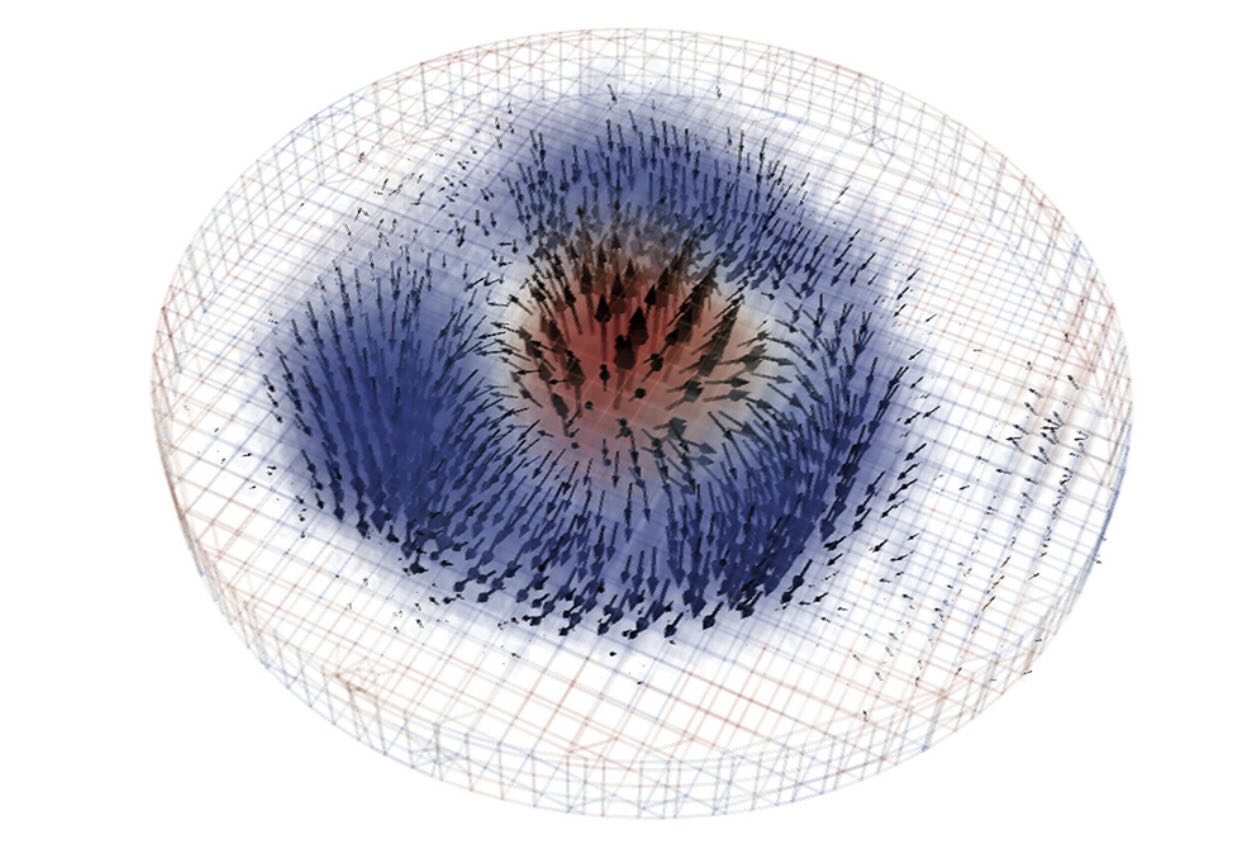Scientists with the U.S. Department of Energy have revealed that an extremely small variety of object, previously only predicted in theory and observed under experimental conditions, has finally been captured in 3D X-ray images.
Known as magnetic skyrmions, these statically stable solitons—a class of quasiparticles whose characteristics make them notoriously difficult to describe—remain of particular interest to researchers because of their potential applications in fields that include microelectronics. In the future, magnetic skyrmions may eventually help to facilitate new and more efficient methods of storing large amounts of data, an application that could be beneficial as scientists continue to advance the field of quantum computing.
Hampering such applications is the fact that, currently, our understanding of skyrmions remains limited, and detailed visualizations of these evasive particle-like textures have been equally elusive, until now.
New research led by the Department of Energy’s Lawrence Berkeley National Laboratory senior researcher Peter Fischer employed novel 3D X-ray imaging techniques to produce the most detailed visualizations of skyrmions ever seen, helping to characterize these curious quasiparticles and allowing researchers an unprecedented ability to measure the orientations of spins occurring within them.


Fischer said the team’s results offer a fundamentally new foundation for researchers studying nanoscale metrology for spintronics devices.
The Mystery of Magnetic Skyrmions
David Raftrey, the lead author of a new study detailing the achievement, likens magnetic skyrmions to tiny spinning pockets of magnetism, where the magnetic spin toward the center of these miniscule pockets is oriented upward. By contrast, the magnetic force these objects produce shifts in a downward direction further out toward the center of the skyrmion.
Raftrey, currently a student researcher with Fischer’s team at Berkely Laboratory, says that skyrmions possess remarkable speed, stability, and are topological, meaning that they aren’t easily unfolded. Such attributes are part of what makes skyrmions appealing to researchers, since they are indicators of their potential usefulness in the storage and carrying of information, not unlike how electrons are presently used for such purposes in electronic storage devices.
“Relying on the charge of the electron, as it is done today, comes with inevitable energy losses,” Raftrey said in a recent statement, noting that the spins associated with magnetic skyrmions would produce significantly lower losses than those associated with electrons.
In the past, testing this has been difficult, since most research has had to rely on theoretical concepts about these elusive quasiparticles, primarily drawing from 2D descriptions of them. In practical use for real world applications, constraining skyrmions to just two dimensions doesn’t work: they must be represented as 3D objects, allowing researchers to fully examine the spin characteristics present throughout their entirety.
Capturing Tomographic Imagery of a Skyrmion
Raftrey says that another issue involving the unusual dynamics of skyrmions is that the magnetic whirlpools produced by their spins can be vastly different from one portion to the next, and that one of the challenges for the team had been finding a way to reliably demonstrate this.


The team began by taking a thin magnetic layer combined with a patterned nanodisk produced at the nanofabrication facility at Berkeley Laboratory’s Molecular Foundry. Once crafted, this nanodisk was transported to Switzerland’s Swiss Light Source facility where a specialized process known as magnetic X-ray laminography, produced using a special microscopy beamline at the facility, allowed the production of tomographic images required to produce a 3D representation of a magnetic skyrmion.
Raftrey said that the facility’s capabilities allowed him to reconstruct a composite of the skryrmion from a large combination of imagery and data, a process that took a period of several months, but which ultimately proved successful, offering an unprecedented view of a notoriously elusive object and its spin structures.
Raftrey said the new images produced by Berkeley Laboratory and its “opens opportunities to explore and tailor 3D topological spintronic devices,” which he says could possess “enhanced functionalities that cannot be achieved in two dimensions.”
Raftrey and the Berkeley team’s paper, “Quantifying the topology of magnetic skyrmions in three dimensions,” was recently published in Science Advances.
Micah Hanks is the Editor-in-Chief and Co-Founder of The Debrief. He can be reached by email at micah@thedebrief.org. Follow his work at micahhanks.com and on X: @MicahHanks.

